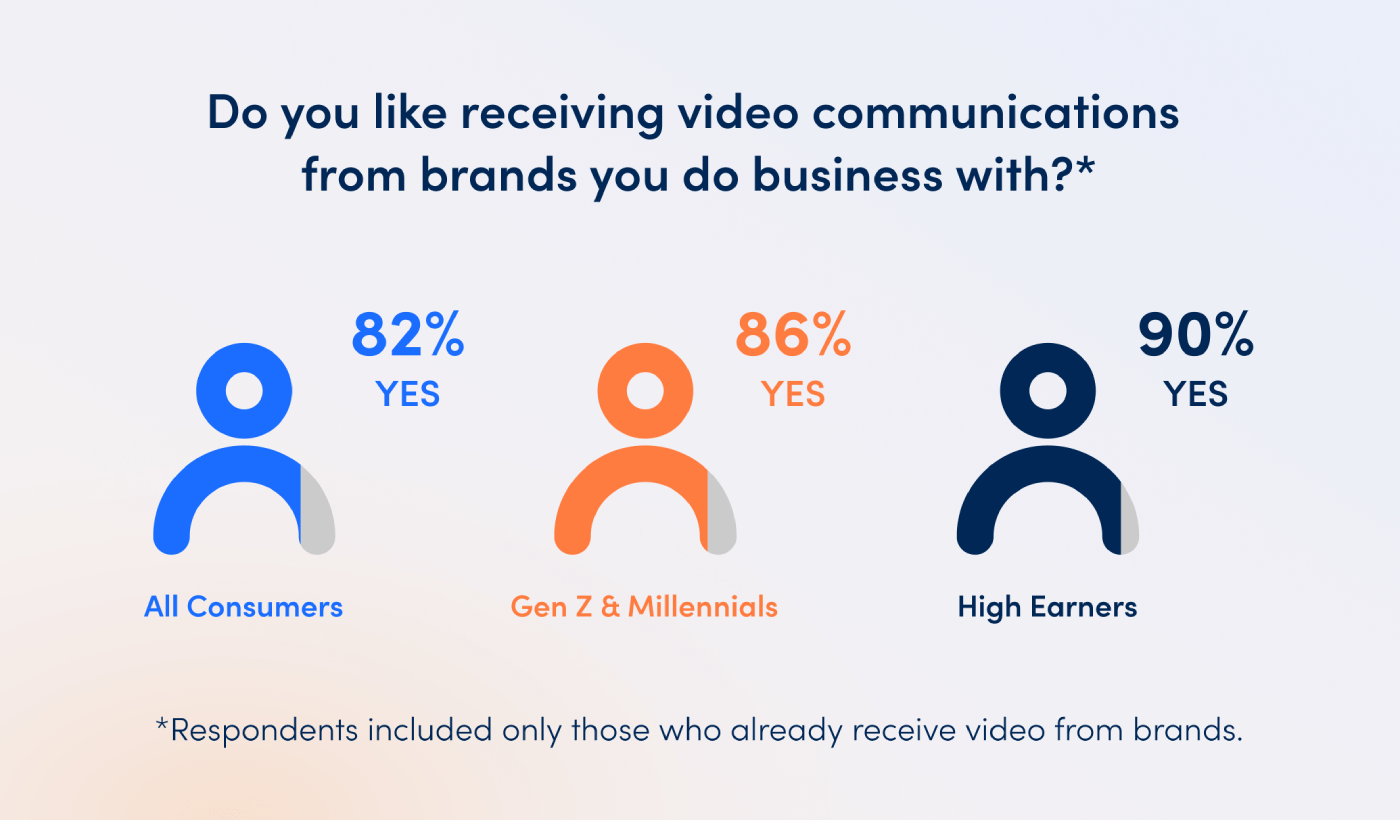In today’s hyper-connected world where attention spans are shorter than ever, businesses must adopt innovative approaches to captivate and retain their customers. This is where an effective customer engagement strategy steps in as an essential ingredient for success.
Gone are the days when a transactional approach filled with passive customer interactions and generic messaging was enough. Organizations now need to build meaningful relationships with their customers, ensuring their needs are met, their voices are heard and their experiences are exceptional.
So if you’re ready to take your digital customer engagement to the next level, buckle up. We’ll guide you through 8 steps to a successful customer engagement strategy. From understanding your target audience to building a seamless omnichannel experience, we’ll cover the top strategies. Ready? Let’s dive right into step one.
1. Understanding Your Target Audience
First things first, you need to truly understand your target audience. This crucial step lays the foundation for all your subsequent efforts. After all, how can you engage with your customer base if you don’t know who you’re engaging with?
Post on
By identifying your target audience, you can tailor your approach to meet their specific preferences and needs and maximize the impact of your engagement initiatives. But how do you go about this?
Market research plays a crucial role here. Whether you want to consult secondary sources or conduct surveys, focus groups and interviews, comprehensive research is key to gaining insights into your audience’s behaviors, interests and expectations.
Understanding your audience allows you to align your messaging, tone and communication channels accordingly. In doing so, you can create meaningful and memorable experiences that drive engagement and customer retention.
For instance, if younger consumers or high-income earners are part of your target audience, a study revealing their communication preferences would be valuable. Why? Because being informed of that preference would allow you to leverage that information to engage those demographics effectively. Here’s a snapshot of findings from our recent market study as an example.
So go ahead and dive into the data. Learn all about your target audience and let the knowledge guide your customer engagement strategy.
2. Defining Clear Engagement Goals
It’s hard to hit the bullseye if you don’t know what you’re aiming for. With clear engagement goals and measurable KPIs in place, you’ll be able to evaluate your strategy’s effectiveness and make data-driven decisions.
To start, ask yourself: What do you want to achieve through your digital customer engagement efforts? Is it reduced churn? Higher conversion rates? Enhanced brand loyalty? Greater brand awareness? Defining these goals will provide a roadmap for your strategy and help you stay focused on what matters most.
From there, establish measurable key performance indicators (KPIs) that will serve as benchmarks for success. Focus on engagement metrics that align with your goals. Click-through rates, conversion rates, social media interactions and customer feedback scores are just a few metrics that can give you insight into the effectiveness of your efforts.
Pro tip: Don’t let your ambitions soar so high that they become unreachable. Set realistic and time-bound targets. Consider the whole picture, from what you’ve learned about your audience to your industry expertise, in order to set rational goals.
3. Crafting Compelling Brand Messaging
In a world where customers are bombarded with countless messages from various brands, it’s crucial to cut through the noise and capture their attention.
Your brand’s message should resonate with your target audience, aligning with their values, aspirations and pain points. Crafting a message that speaks directly to your customers will not only capture their attention but also foster a deeper relationship with your brand.
So, how can you develop brand messaging that stands out from the noise and genuinely engages your customers? Create a connection that goes beyond a mere transaction.
This is where a strong understanding of your target audience pays off. When you know your audience well, you can tailor your messages in a way that resonates deeply with them. For example, if your target audience values sustainability, incorporating eco-friendly practices and highlighting them in your messaging can help you connect with them better.
You’ll also want to establish your unique selling proposition that sets your brand apart from competitors. Identify what makes your product or service unique and position it as a solution to your customer’s specific challenges.
Tesla nailed this by centering their offerings and messaging around sustainability, innovation and a commitment to advancing the adoption of clean energy. Their mission to “accelerate the world’s transition to sustainable energy” resonates among their engaged customers, which include environmentally conscious consumers and tech enthusiasts alike.
When it comes to your communications, consistency is key. Ensure that your brand messaging is consistent across all touchpoints, including your website, social media channels, email communications and ad campaigns. This will help reinforce your brand’s identity and make it easily recognizable to your audience.
4. Leveraging Video To Capture Attention
In the world of digital content, video has taken center stage. It’s no secret that video has the power to capture and retain the attention of customers. With the rise of social media, streaming platforms and the ever-expanding digital landscape, incorporating video into your customer engagement strategy can be a game-changer.
Video is an effective tool because it combines visual, auditory and emotional elements, making it a highly engaging form of content. It offers a dynamic and immersive experience, enabling you to tell stories, showcase products or services and connect with your audience individually, especially when you add personalization.
Consumer trends highlight the popularity of video in customer communications. For example, our recent survey of over 2,000 consumers found that 81% of people want to see more video content from brands. And that’s not just your standard generic video ad either.
- 79% of consumers are interested in Interactive Video from brands.
- 83% of high earners are interested in customizable video content from brands.
- Consumers are 3.5x more likely to want Personalized Video than not.
- Gen Z and millennials are 49% more likely to be interested in AI video than other generations.
Interestingly, though, 70% of people say they rarely or never receive video from brands. That means there’s a huge opportunity for brands like yours to fill the gap and give customers what they want.
Certainly, there are big brands that have already capitalized on the power of video-driven campaigns. Apple’s “Shot on iPhone” campaign continues to evolve and engage audiences by showcasing stunning videos captured with their products.
Through video, the campaign highlights the capabilities of their devices in a way that is visually interesting while also indirectly inviting users to share their own content. The hashtag #ShotOniPhone has more than 28 million posts on Instagram alone, showing how a video campaign can lead to organic word-of-mouth exposure.
Or consider Call of Duty’s recent campaign to celebrate the new Call of Duty: Warzone 2.0. It covered players’ legacy with the original Call of Duty: Warzone, recapping their K/D ratio, matches played, wins, squadmates and more. Each video was unique to the player, reaching millions of fans in nearly 100 countries.
Want to get ahead of the curve? Experiment with the latest video marketing trends to take your engagement to another level.
5. Personalizing the Customer Experience
Imagine going to your favorite coffee shop and the barista greets you by name and already knows your usual order. That level of personalized service makes you feel valued and keeps you coming back for more. The same approach can be applied to digital marketing.
People want to be treated as individuals, not transactions. With personalization, you can forge deeper connections, drive meaningful engagement and secure loyal customers.
Customers expect brands to understand their unique needs and preferences and tailor their experiences accordingly. According to McKinsey, 71% of consumers expect companies to deliver personalized interactions, with 76% saying they get frustrated when this doesn’t happen.
Personalization is more than just addressing someone by their first name in an email. It’s about using the wealth of customer data at your fingertips to deliver highly relevant and personalized experiences that people can’t help but engage with.
For example, to keep its members motivated and engaged, Orangetheory Fitness produced and sent out celebratory year-in-review videos for its members. Leveraging customer data, such as the number of challenges completed and calories burned, each video was personalized to reflect the member’s individual fitness journey.
Give it a watch to see what I mean.
The campaign helped lead to over 45,000 additional classes booked and a record-high attendance rate of 97% during launch week. And 65% of members viewed their video to completion, signaling just how effective the personalized campaign was at keeping their attention.
From designing a personalized onboarding experience to sending exclusive offers through a customer loyalty program, the possibilities with personalization are endless.
6. Adding Interactive Content
Interactive content helps get your customers actively involved with your brand rather than passively consuming information. Whether it’s Interactive Videos, quizzes, polls or immersive virtual experiences, there are so many ways you can use interactivity to elevate a touchpoint and surpass customer expectations.
These engaging elements create a two-way conversation between your brand and customers, fostering a deeper connection and leaving a lasting impression. Not to mention, they make your brand stand out in a sea of static content.
Take, for example, Sephora’s Quizzes. By allowing customers to get a personalized product lineup with a few clicks, the retailer transforms the online shopping experience into an interactive journey that gives them a sense of empowerment and delight.
Here’s another idea. Remember the “Choose Your Own Adventure” style videos? They allow viewers to make decisions at different points in the story, influencing the outcome and making the experience truly personalized.
Play with the video below and see if you can think of any creative use cases for Interactive Video. For instance, you could use Interactive Video to onboard a new customer, with the user able to pick and choose what they want to learn about in real-time.
The key to successful interactive content lies in its ability to captivate your audience and provide value. It should be relevant, engaging and seamlessly integrated into your overall customer journey. Don’t be afraid to get creative with it. The sky’s the limit!
7. Building a Seamless Omnichannel Experience
Picture this: your customer receives a Personalized Video message on their birthday, followed by an email offering a discount on their favorite item and then sees a targeted ad on social media showcasing new products they’d been eyeing. That’s the power of a well-executed omnichannel experience.
Post on
An omnichannel approach allows you to meet your customers where they are, whether it’s through social media, email, chatbots or even a mobile app. By integrating these channels, you create multiple touchpoints that enable customers to interact with your brand on their terms, increasing your chances of meaningful engagement.
Now, this doesn’t mean you have to be on every single channel that exists. Again, it all goes back to having a customer-centric approach and picking channels that your target audience — your existing customers and potential customers — prefer. It’s all about creating a seamless experience for them, regardless of the channel they choose to engage with you.
8. Analyzing and Optimizing Customer Engagement
As with any marketing strategy, measuring the effectiveness of your efforts is crucial for continuous improvement and staying ahead of the game.
Dive into the key customer engagement metrics you’ve tracked according to your goals and KPIs. Analyze the data to identify patterns, trends and areas where your strategy is shining or stumbling. What’s working well? What’s not? Is there a channel that’s not performing as well as others? Are there engagement touchpoints where customers are dropping off?
Once you’ve identified areas for improvement, roll up your sleeves and get to work. Use the data you’ve gathered to make informed decisions about refining your engagement tactics. Experiment with different approaches, messaging or incentives to see what resonates best with your audience.
In business, things can change in a blink of an eye so your strategy should be flexible and adaptable. By continuously analyzing and optimizing your customer engagement efforts, you’ll ensure that your strategy remains effective and aligned with customer needs and expectations.
Amp up Your Customer Engagement Game with Idomoo
Customer engagement has emerged as the key differentiator for businesses seeking to build lasting customer relationships. By implementing a well-crafted digital customer engagement strategy, you can connect with your customers on a deeper level, boost customer satisfaction and drive meaningful business outcomes.
From understanding your audience to leveraging data and personalization, the 8 steps we covered provide a solid foundation for success. However, the journey to effective customer engagement doesn’t end there. It requires the right tools, technologies and partners to elevate your strategy and deliver remarkable experiences to your customers.
That’s where Idomoo can help. Whether you want to send tailored onboarding videos, personalized product recommendations or exclusive referral offers, our Next Generation Video Platform makes it easy to deliver the right message to the right person at the right time.
Let us show you firsthand how to revolutionize your customer engagement strategy. It all starts by clicking a button.







